If you fancy a new hobby that you can undertake whatever the weather and wherever you live, why not try lichenology? This rapidly growing science takes enthusiasts from the paving slabs outside their front doors to the weathered summits of the Scottish Highlands.
What are lichens?
At school we were taught that lichens were an intimate partnership between a fungus and an alga, but it's not always that simple. Some of the ‘algae’ turn out to be cyanobacteria, and the precise nature of the partnership can be hard to untangle. The net result, however, is a lichen flora described by the late lichen hunter Oliver Gilbert as a “ravishing display of colour, texture, symmetry, newness and sculptural form.”
Lichens are famously sensitive to sulphur dioxide pollution, and many species decide in urban areas during previous of industrial growth. But thanks to the Clean Air Act, they are making a welcome comeback.
The variety of lichens can be daunting, so here is a guide to some of the more common species. The most conspicuous part of many lichens is the thallus, the manifestation of the fungal partner. The main forms of the thalli are fruticose, such as the pixie carps; crustose, like the Xanthorias; and foloise or leafy, such as the dog lichens.
You can study them with the naked eye, but a hand-lens or microscope will reveal new wonders.
Why are lichens different colours?
The colour ecology of lichens is complex, extraordinary and not yet fully understood. Lichens are mini ecosystems, involving symbiotic partnerships between a fungus and an alga or a cyanobacteria. The non- fungal partner provides photosynthetic chlorophyll, which brings greenish pigments, while a multitude of compounds, such as usnic acid, bring reds, oranges, yellows and browns. Meanwhile, reactions with rainwater can make the surface of the lichen more transparent, which vividly reveals underlying pigments.
Some lichens carry extra stowaway species of parasitic fungi, have an algae coating, or undergo chemical breakdown due to air pollution, all of which can affect colour, too. Then there are ‘psychedelic’ lichens.
Under UV light, forests come alive with carpets of luminous lichens in bright yellow, blue, pink, purple and orange. To our eyes, these lichens look pale grey or white.
Answered by Alex Morss.
How do lichens reproduce?
Most lichens reproduce asexually, when conditions are good they will simply expand across the surface of the rock or tree. In dry conditions, they become crumbly – small pieces break off and are dispersed by the wind.
The fungal component of many lichens will also sometimes reproduce sexually to produce spores. These spores must meet up with an algal partner in order to form a new lichen.
How to identify lichens
Usnea subfloridana
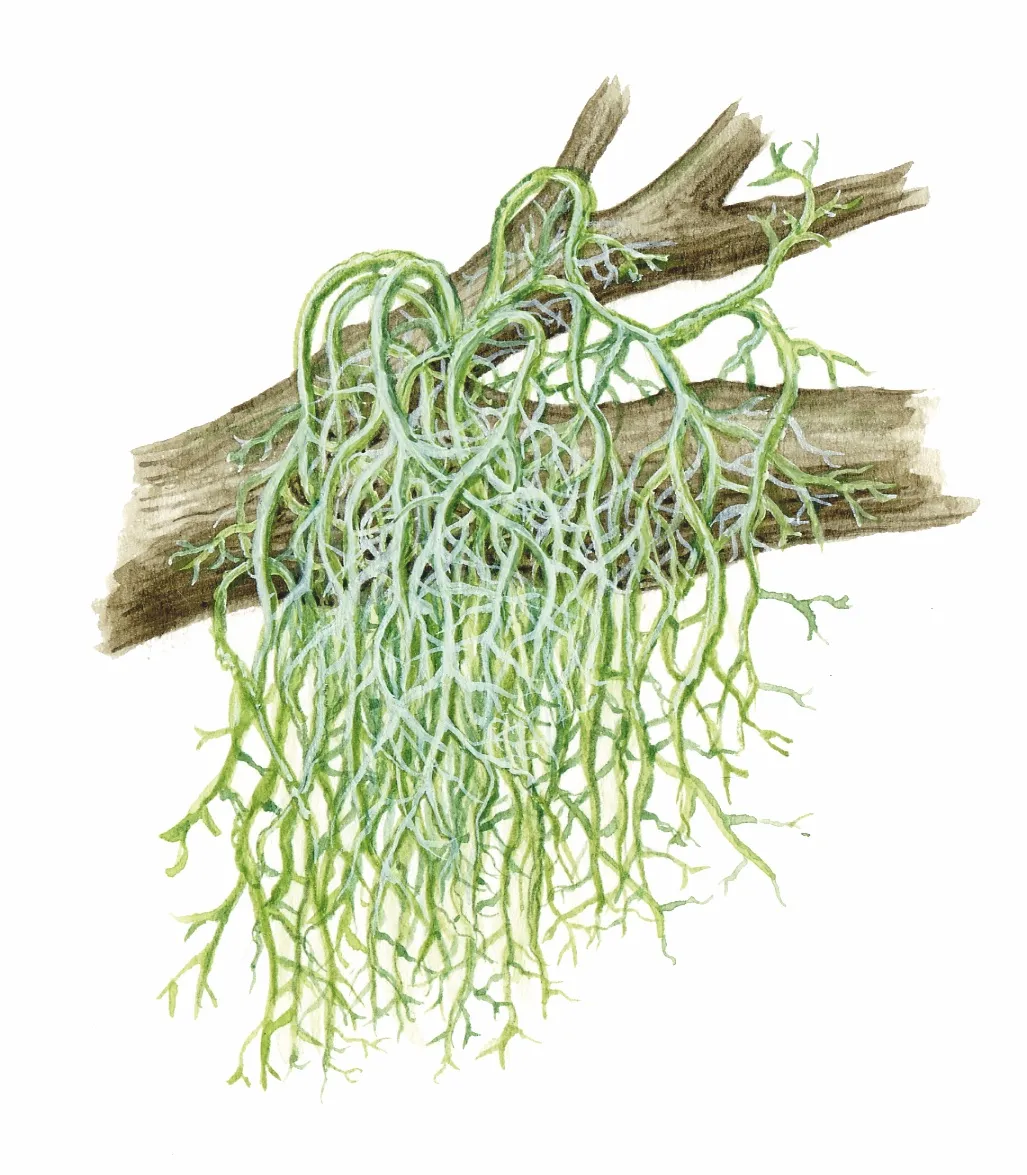
One of the most common Usnea species, this lichen is widespread on trees and twigs, and sometimes found on rocks. It is tolerant to air pollution. Its growth type is fruticose, and it has a bushy thallus, with many branches. It is black at the base of the main stem, and the rest of the lichen is usually yellow-green or grey-green in colour.
Winter means that beardy clumps of this common lichen become suddenly conspicuous on bare branches. In some areas it is occasionally replaced by the rarer Usnea florida. These species are separated by reproductive strategy: the former sheds tiny parts that sprout anew from bark fissures; its scarce relative produces sexually reproductive structures called apothecia that have a neater, ‘flower-like’ appearance.
Oakmoss (Evernia prunastri)
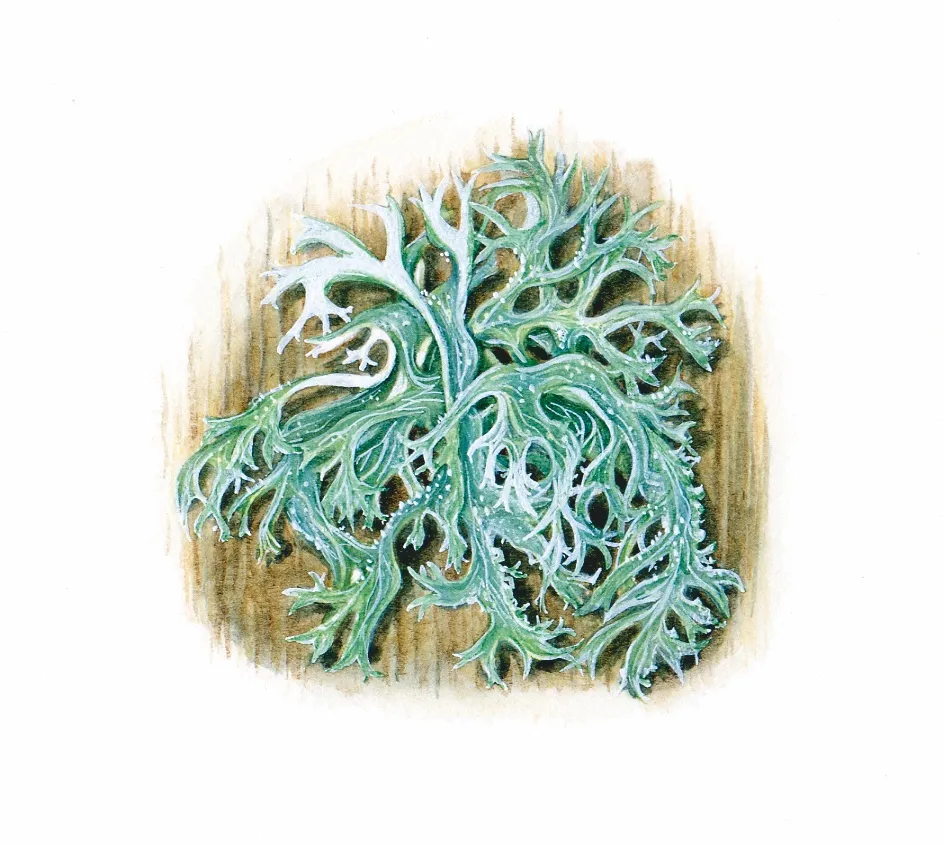
Oakmoss is a grey-green coloured foliose lichen which appears to be fruticose. It’s a common and widespread species in the UK, and typically found crossing on wood, such as branches, fences, tree trunks and twigs. This lichen is used in modern perfumery.
Common greenshield lichen (Parmelia caperata)
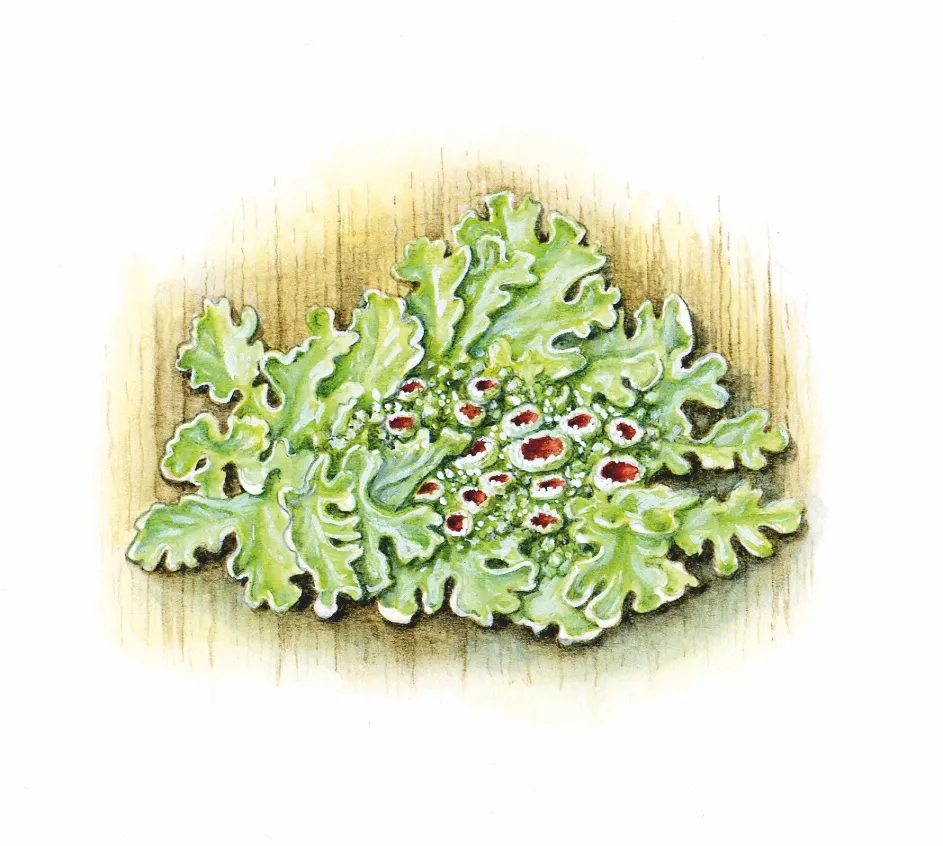
A foliose species, the common greenshield lichen can mainly be found growing on the bark of trees, and less often, on rock. It looks pale grey when dry and yellow green in wet. It is a widespread species, and locally common, with limited distribution in west and north of Scotland.
More on plant and fungi identification:
Hammered shield lichen (Parmelia sulcata)
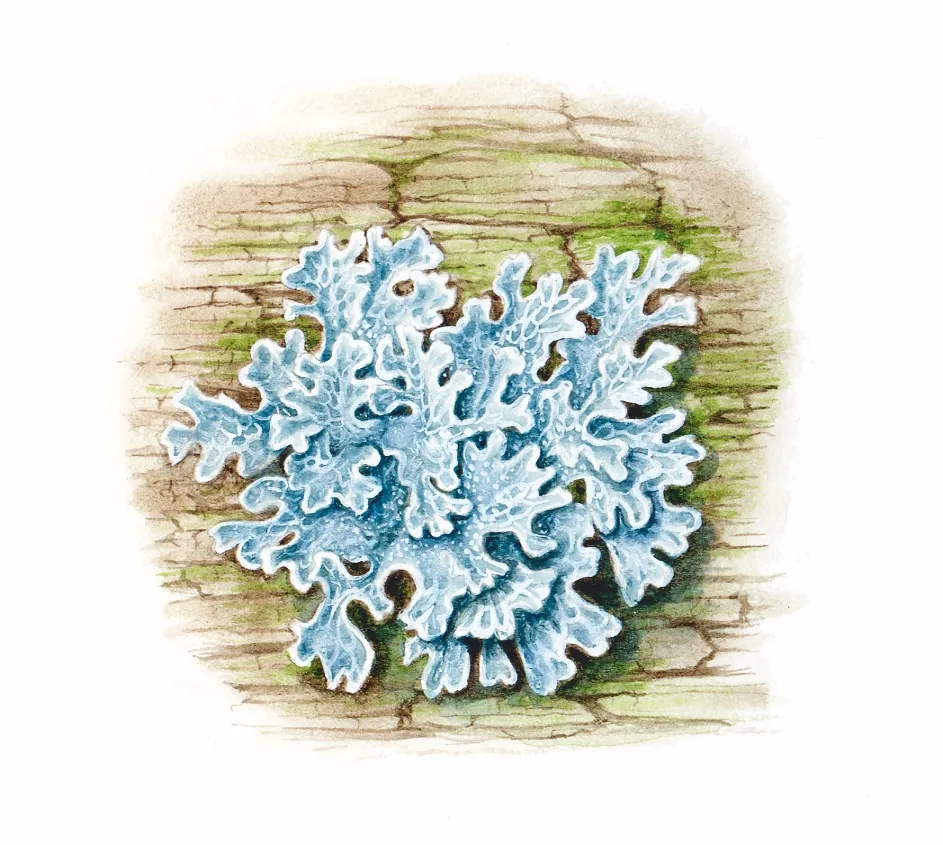
A widespread and common species in the UK, hammered shield lichen is grey-white in colour with brown tips, with a large thallus measuring up to 10cm in diameter. It’s got a number of common names including cracked-shield lichen, powdered crottle, furrowed shield lichen, powdered shield, and waxpaper lichen.
Monk’s hood lichen (Hypogymnia physodes)
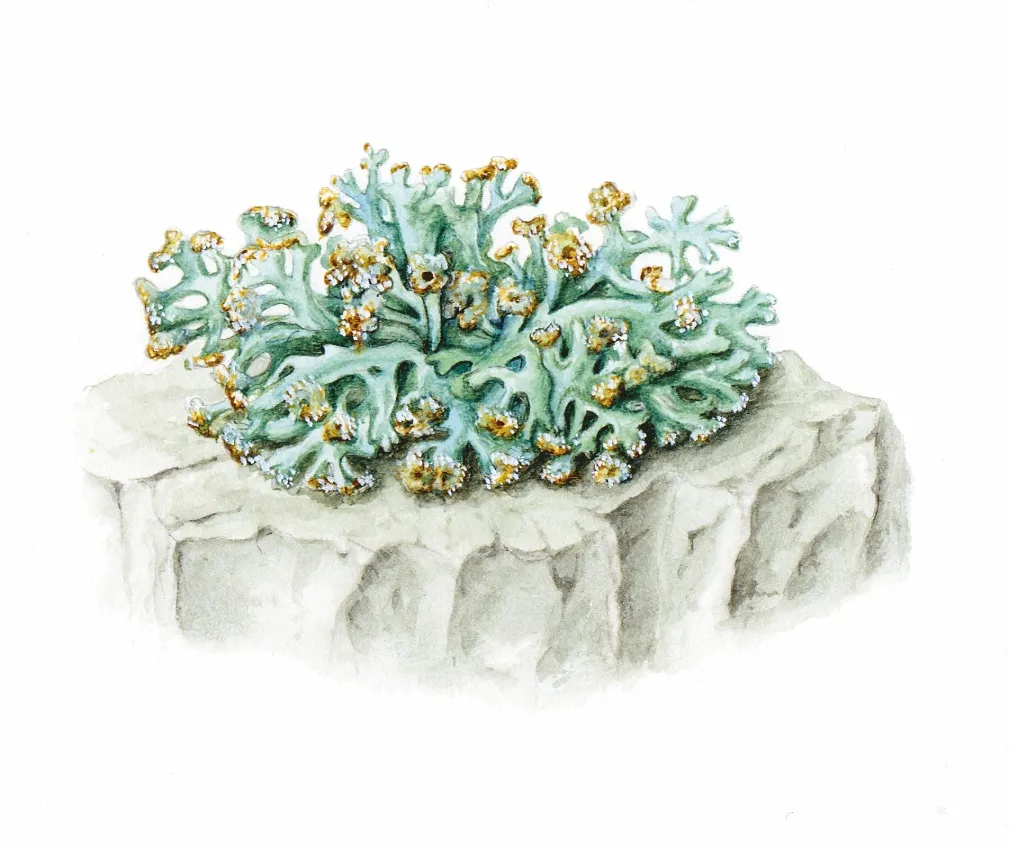
Monk’s-hood lichen is often used for monitoring and assessing air pollutions, as it has a moderate sensitivity to sulphur dioxide and heavy metals. Its thallus is grey-green in colour, with white powdery soredia (reproductive structures) on the underside of the upturned outer edges.
Reindeer lichen (Cladonia portentosa)
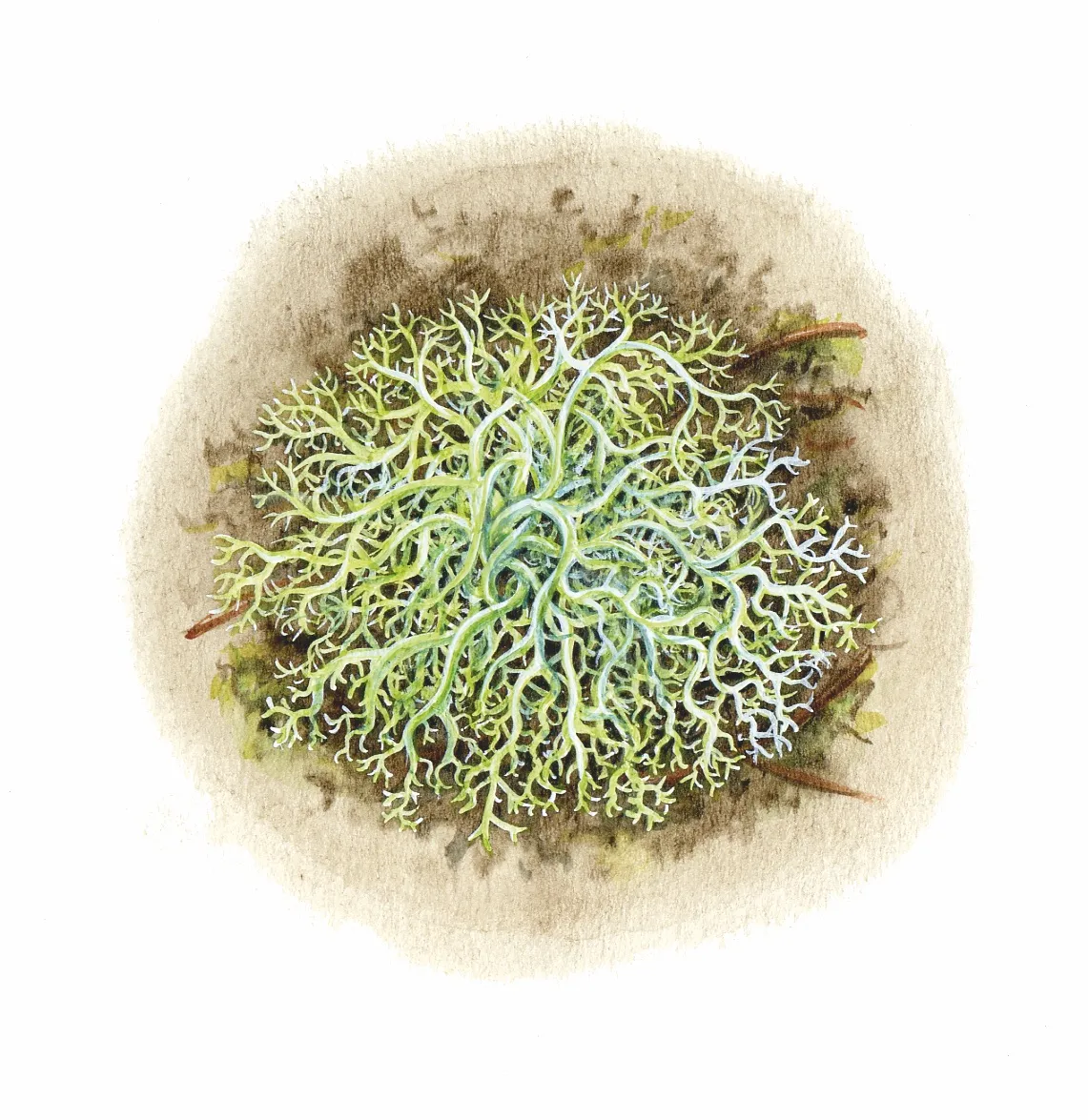
Also known as cream cup lichen, reindeer lichen is light in colour and fruticose in shape. A similar species (C. rangiferina) is also sometimes known as reindeer lichen, and is an important food for reindeer.
Cladonia floerkeana
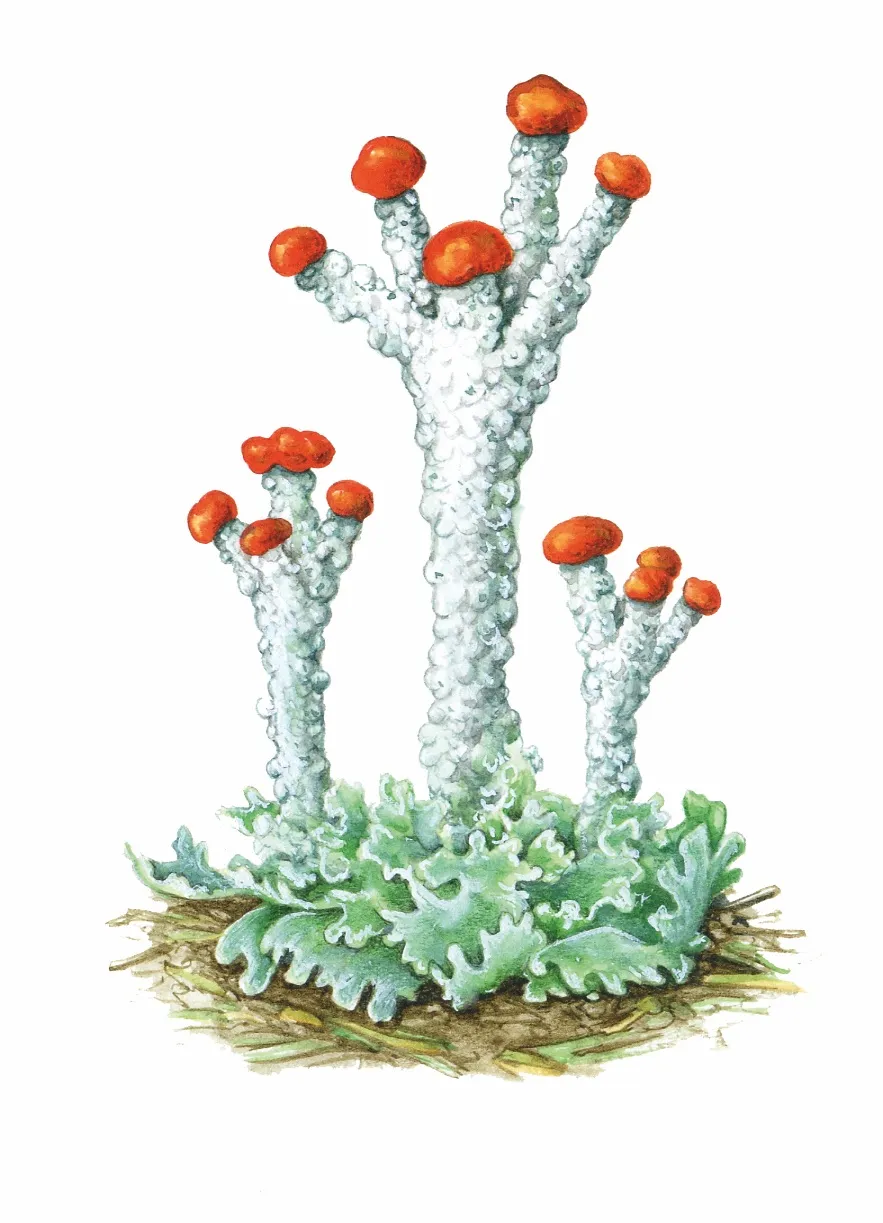
This fabulous lichen sprouts dense clusters of tiny fingers up to 2cm high, which resemble old-fashioned red-tipped matches. With a bit of imagination, they also recall Red Coat infantry from a bygone age, hence the species’ alternative name ‘British soldier’. These are the fruiting bodies of the lichen, with reproductive structures located at the end. Search for devil’s matchsticks in the rich peat of heaths and moors, or on decaying tree-stumps.
Trumpet cup lichen (Cladonia fimbrata)
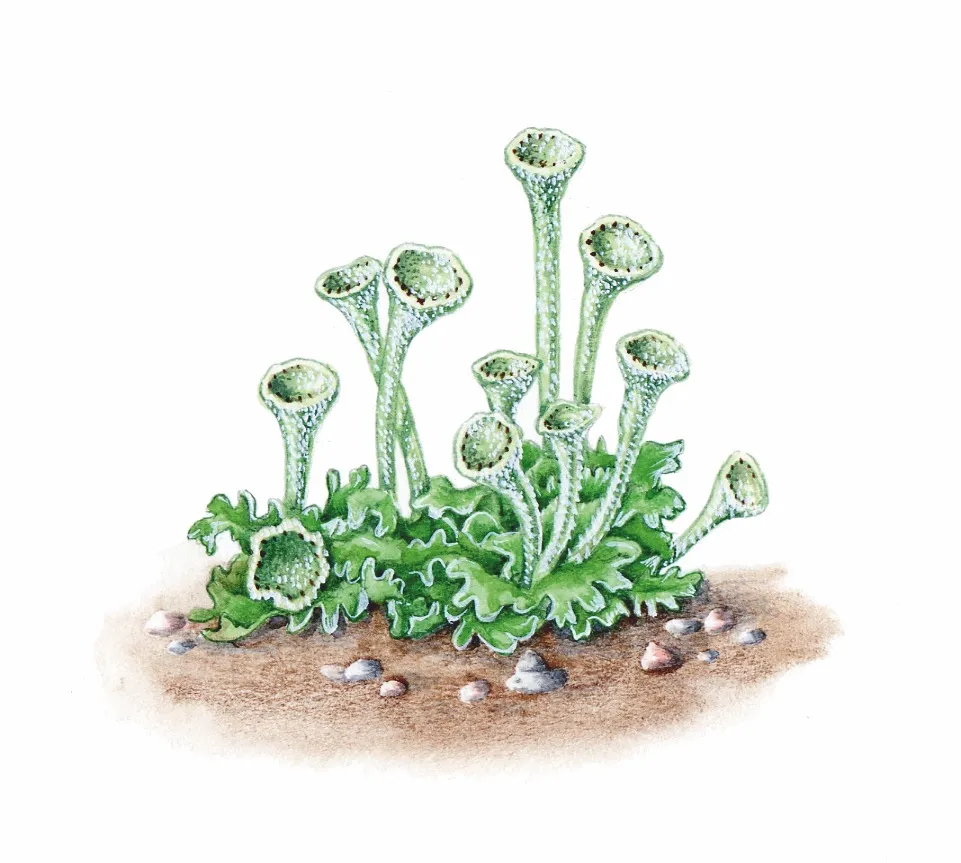
Belonging to the Cladoniaceae family, it’s fairly obvious where the common English name ‘trumpet cup lichen’ came from – with the grey-green cups atop long stems. This widespread and common species is normally found growing on soil and rotting wood, can be seen all year round.
Maritime sunburst lichen (Xanthoria parietina)
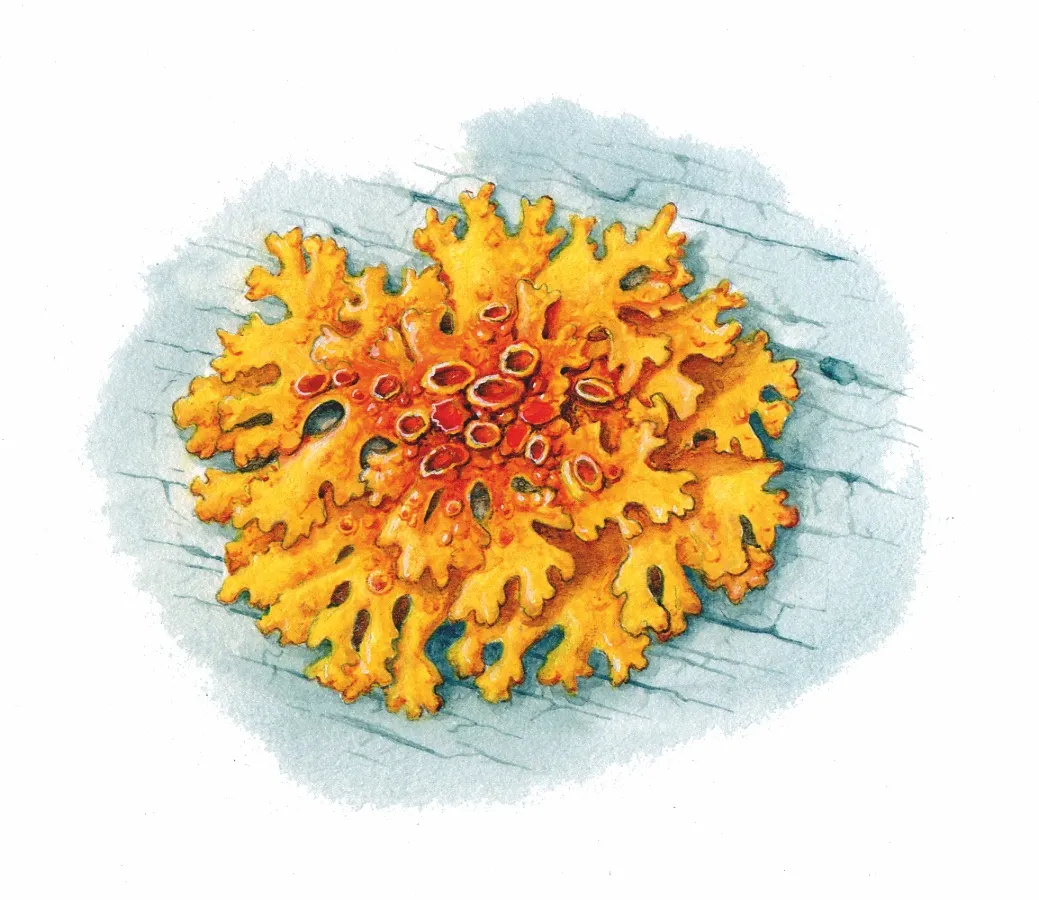
The maritime sunburst lichen provides a bright splash of colour on rocks or walls near the shore, or inland on rocks, walls and tree bark. It is also known by common names including common orange lichen, yellow scale and shore lichen. It’s a common and widespread species, and very tolerant of pollution.
Sea ivory (Ramalina siliquosa)
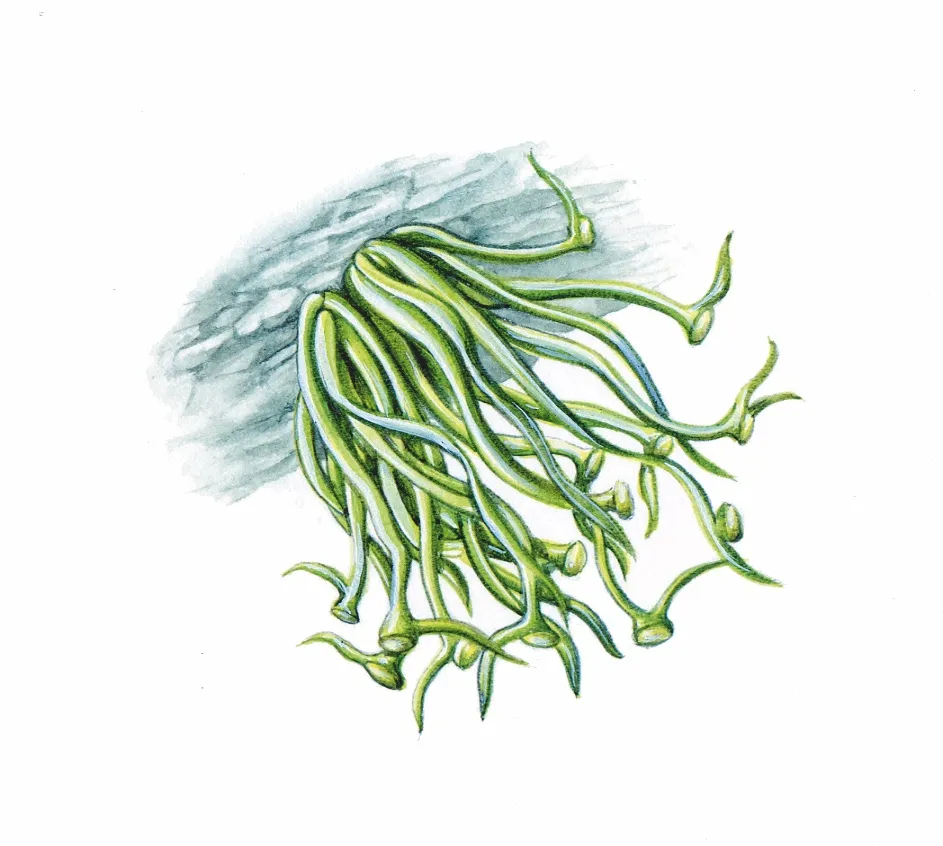
A fructiose species, this brittle grey-green lichen is found on rocks and walls on the coastline – although it grows above the high-tide mark, it is tolerant of salt spray. It
Dog lichen (Peltigera canina)
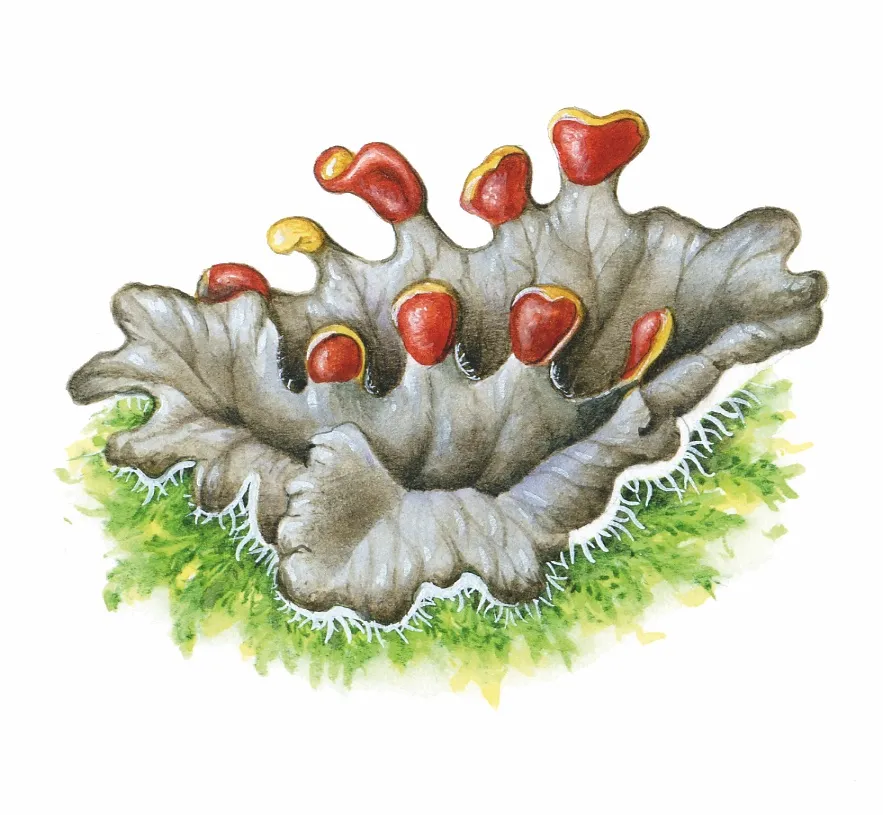
Typically found growing on soil, woodlands, fields and sandy areas, the dog lichen can be easily confused with the closely related and more widely occuring Peltigera membranacea.
Umbilicaria cylindrica
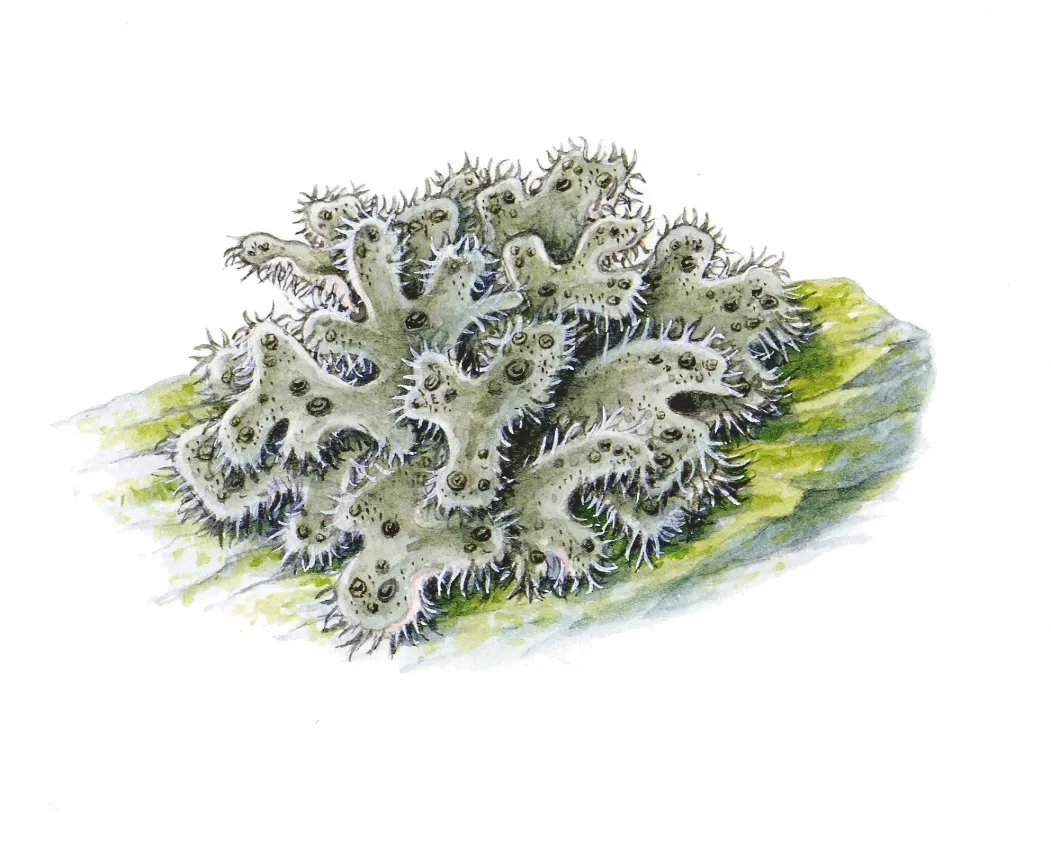
With a grey-brown upper surface and dark grey-black spots, this foliose lichen species is most commonly found in northern Scotland.
Main image: A close up of a pale green lichen in the Brecon Beacons, Wales, UK. © C T Aylward/Getty
All illustrations by Sandra Pond/The Art Agency.







